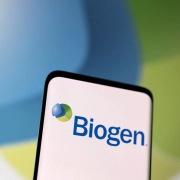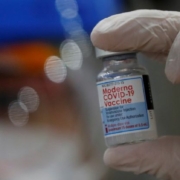Prescription drug inflation rebates: the inflation reduction act impact just around the corner
Prescription drug inflation rebates: the inflation reduction act impact just around the corner
By Kyle Sarnataro
Since the passing of the Inflation Reduction Act of 2022, its drug pricing and reimbursement provisions have garnered significant attention. The landmark decision to allow government price negotiation for pharmaceutical treatments has been covered by major news outlets and healthcare analysts alike, but the first negotiated prices will not apply until 2026. The numerous shifts in cost-sharing responsibility that collectively constitute Medicare Part D Benefit Redesign have been thoroughly summarized and visualized, though these will not begin until 2024 and will take full effect in 2025. As early as 2023, however, pharmaceutical manufacturers and payers will have to contend with one of the more imminent potential impacts of the law: inflationary rebates for Medicare utilization.
The letter(s) of the law: ASP and AMP
Put simply, as Centers for Medicare & Medicaid Services (CMS) has done in the sole sentence summarizing the relevant provision for its fact sheet on the Inflation Reduction Act — “drug manufacturers will also have to pay a rebate to Medicare if they raise their drug prices at a rate that is faster than the rate of inflation.” The nuances of the law, however, are more complicated.
To start, the law directly regulates pricing metrics over which manufacturers have significant, but not complete, control. For Part B products, manufacturers will owe rebates if the payment amount for a given period exceeds the inflation-adjusted payment amount for that period. For most products, this payment amount refers to 106% of the average sales price (ASP), which reflects a weighted average of manufacturer sales inclusive of rebates and discounts. While manufacturers set list prices and negotiate these discounts, they do not unilaterally determine ASP. The ASP for a given period will depend on the volume of utilization subject to the different price points made available to distinct customers.
For Part D products, manufacturers will owe rebates if the average manufacturer price (AMP) for a given period exceeds the inflation-adjusted AMP. While AMP often exhibits more stability than ASP due to greater consolidation of customers that influence this metric (i.e., wholesalers and pharmacies), manufacturers with inconsistent contracts across these stakeholders will still face challenges in estimating weighted average pricing to forecast potential impact.
Drug pricing reform advocates will no doubt see a simple solution to these challenges: stop taking price increases. Despite potential oscillations in ASP and AMP, a consistent list price should avoid triggering inflationary penalties. While this is valid, if the intent of the law (as implied by its structure) is to allow drug pricing to keep pace with inflation — however ironic that may be in the context of a law labeled the “Inflation Reduction Act” — the mechanisms by which it enforces such control present a challenge even to manufacturers intending to comply with this edict.
Timelines, requirements, and consequent challenges
Of course, the complexities of the law extend beyond the minutiae of the pharmaceutical pricing lexicon. In a continuation of the existing divergence of medical and pharmacy benefit design, the new inflationary penalties operate on a distinct schedule for Part B and Part D products. Table 1 presents a summary of the timing for key components of the rebate calculations.
| Timing of Evaluation Periods and Benchmarks for Inflationary Rebate Calculations for Part B and Part D Products | ||
| Part B | Part D | |
| Benchmark CPI-U Date | January 2021 | January 2021 |
| Benchmark Cost Period | July 1, 2021 – September 30, 2021 | January 1, 2021 – September 30, 2021 |
| Initial Evaluation Period | January 1, 2023 – March 31, 2023 | October 1, 2022 – September 30, 2023 |
| Evaluation Period CPI-U | CPI-U of the 1st month of the quarter that is 2 quarters prior to the period | CPI-U of the 1st month of the period |
| Evaluation Frequency | Quarterly | Annually |
| Table 1 describes the key dates for products approved as of December 1, 2020, for Part B products and October 1, 2021, for Part D products. For products marketed after these dates, timelines are shifted accordingly. | ||
The timelines also vary with respect to the period in which the Secretary of the Department of Health and Human Services must inform manufacturers of their rebate responsibility: for Part B, the Secretary must inform manufacturers within 6 months of the period end, whereas for Part D, the Secretary has 9 months to provide this information. Importantly, however, the act allows for the government to delay rebate invoicing for the initial years to near the end of 2025.2 As such, manufacturers will need to both urgently assess their pricing strategies and appropriately plan financial accounting for future collection of any rebates triggered by sales in the interim.
Manufacturers are not the only stakeholders who will need to prospectively plan for these rebates, as the act also requires calculation of coinsurance for Part B products based on the inflation-adjusted payment amount. This achieves the goal of passing savings on to patients, but in doing so, it requires payers to implement a methodology to make this adjusted cost sharing available. Unless CMS provides a mechanism to implement this requirement, it seems payers will need to independently calculate inflation-adjusted payment amounts in real time. This would require potentially significant effort without any recompense, as inflationary rebates will be deposited into the Federal Supplementary Medical Insurance Trust Fund rather than offsetting payer operational investment.
Notable inclusions and exclusions
Any assessment by manufacturers, payers, or industry analysts will need to account for the appropriate products and applicable sales to accurately reflect the scope of inflationary rebates’ potential impact. The following products are excluded from these rebates:
- Products costing $100 or less per individual using the product per year3
- Select Part B vaccines: pneumococcal, influenza, and hepatitis B
- Qualifying Part B biosimilars and multisource Part D generics
Importantly, any biosimilar with an ASP that exceeds that of its reference product and any generic without competition (from either a brand or other generics) are included. For these and all other eligible products, units sold at a 340B discount will be excluded from the rebate calculation; however, for Part D products this only applies beginning in 2026.4 Last, Part D rebates will be excluded from Medicaid best price and AMP calculations.
The bottom line
While the details of the new Medicare inflationary rebates present numerous complications, those well versed in the industry will recognize them as not entirely unique. At its core, this provision of the Inflation Reduction Act clearly intends to mimic the inflationary rebates required under the Medicaid Drug Rebate Program (MDRP) in the Medicare setting. As a result, manufacturers and payers are likely better equipped to respond to inflationary rebates, even if the lead time to do so is limited relative to the other provisions. Familiarity aside, the new regulation does require a thorough assessment; whereas the impact of the inflationary component of the MDRP may be almost negligible for some products, Medicare inflationary rebates may now expand penalties to a more sizeable overall population and to previously unaffected therapeutic areas.
Ultimately, this statement also lays bare the limitations of the provision. Expanding inflationary penalties to Medicare increases their relevance, but the lack of such controls for the commercially insured population limits their potential. Furthermore, these rebates target only price increases and not launch pricing. As newer, innovative, and often more expensive products continue to come to market, inflationary rebates will remain only one, limited tool in curbing overall pharmaceutical drug spending growth.
Notes
- CPI–U means the consumer price index for all urban consumers (United States city average).
- September 30, 2025, for Part B and December 31, 2025, for Part D.
- For Part B products, cost refers to “average total allowed charges”; for Part D products, it refers to “average annual total cost”; $100 threshold applies to initial evaluation period and is adjusted for future periods based on CPI-U changes.
- Units for which the manufacturer provides a discount under the program under section 340B of the Public Health Service Act.
 |
Kyle Sarnataro is a senior director at PRECISIONadvisors, responsible for leading projects and guiding strategic direction for global and US pricing and market access endeavours. His experience includes extensive work in landscape assessment, early pricing valuation, launch pricing, contracting strategy, competitive simulations, scenario planning, analytical modeling, lifecycle management, value story development and refinement, and value-based contracting. Sarnataro has engaged in projects across autoimmune conditions, biosimilars, cardiovascular disease, diabetes, digital health, infectious diseases, neurology, respiratory disease, oncology, orphan drugs, transplant, and more. In support of these projects, he has designed secondary research, organized and conducted primary research, and provided comprehensive data analysis and synthesis to create final deliverables with actionable recommendations for clients. Sarnataro received a Bachelor of Science degree in Chemical and Biomolecular Engineering, with a concentration in Biotechnology and Pharmaceutics, from the University of Pennsylvania. |











